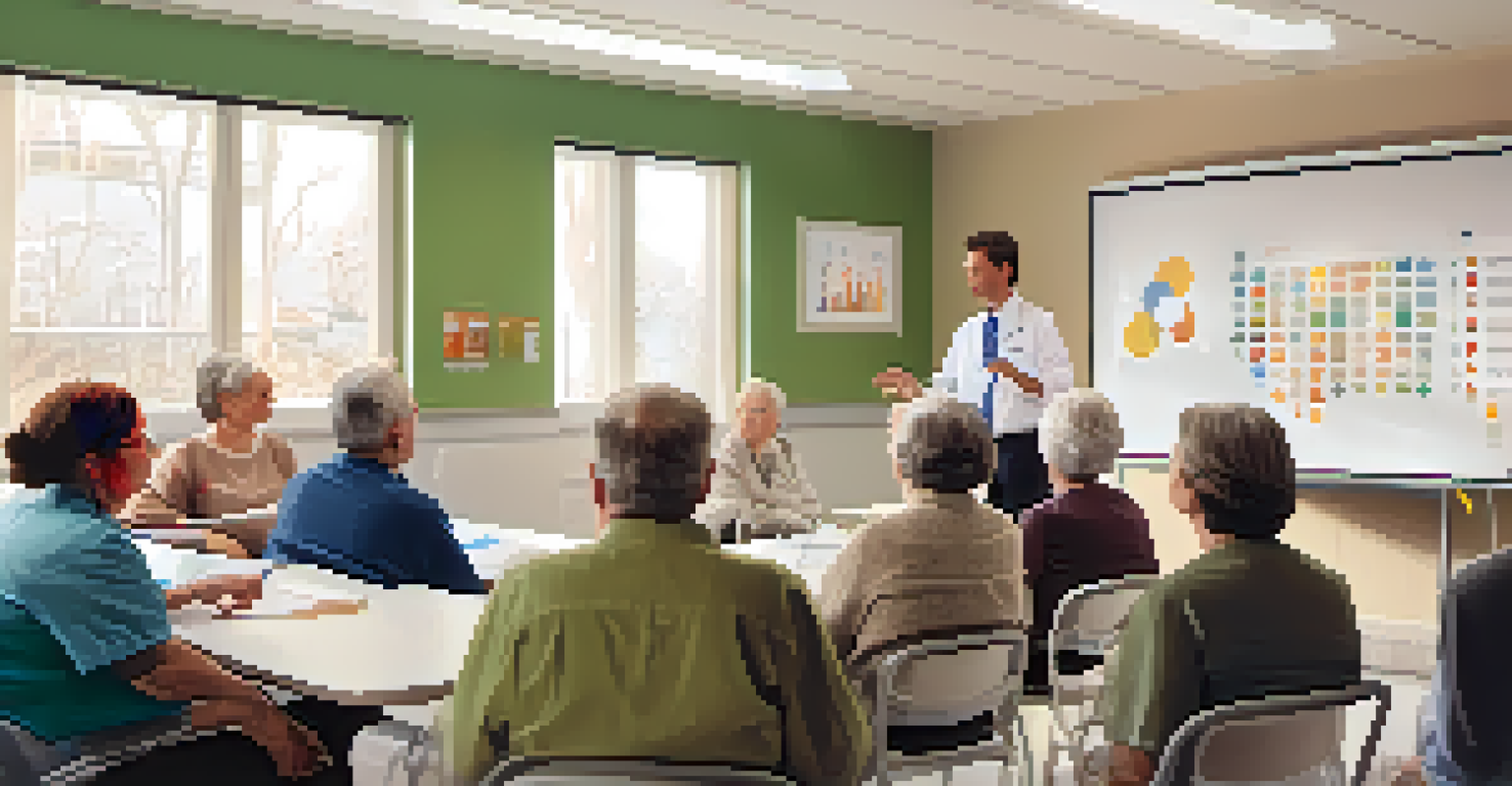Creating Health Literacy Programs: Best Practices

Understanding Health Literacy: What It Is and Why It Matters
Health literacy refers to the ability of individuals to access, understand, and use health information. It’s crucial because low health literacy can lead to poor health outcomes, increased healthcare costs, and a higher likelihood of chronic diseases. By ensuring people can navigate the healthcare system effectively, we empower them to make informed decisions about their health.
Health literacy is not just about understanding health information; it's about empowering individuals to take control of their health and well-being.
Imagine trying to read a map in a foreign language; that’s what navigating health information can feel like for many. When people don’t understand their diagnoses, treatment options, or medication instructions, it puts their health at risk. Therefore, programs that enhance health literacy are not just beneficial; they're essential for fostering a healthier community.
Ultimately, prioritizing health literacy can transform how individuals engage with their health. It’s about creating a society where everyone feels confident in managing their health and making choices that lead to better outcomes.
Identifying Your Target Audience for Tailored Programs
Before launching a health literacy program, it's vital to identify who your target audience is. Different populations have varying levels of health literacy, cultural backgrounds, and specific needs. For instance, seniors may require different strategies than younger adults, such as larger print materials and more interactive sessions.

Conducting surveys or focus groups can help you understand the specific challenges faced by your audience. By gathering insights directly from the community, you can tailor your content and delivery methods to best meet their needs. This approach not only enhances engagement but also ensures that your program is relevant and impactful.
Importance of Health Literacy
Health literacy empowers individuals to understand and utilize health information, leading to better health outcomes.
Remember, a one-size-fits-all approach rarely works in health education. When you customize your program for your audience, you create a supportive environment where individuals feel understood and valued.
Utilizing Clear and Simple Language in Materials
One of the most effective ways to improve health literacy is by using clear and simple language in all educational materials. Avoid jargon or complex medical terms that may confuse readers. Instead, break down information into digestible parts and use everyday language that resonates with your audience.
The ability to read, understand, and act on health information is a crucial part of our health care system.
For example, instead of saying 'hypertension,' you might say 'high blood pressure.' Visual aids, such as charts or infographics, can also help clarify important concepts. When people can easily read and comprehend materials, they’re more likely to retain the information and apply it to their lives.
Ultimately, the goal is to create a welcoming atmosphere where individuals feel comfortable asking questions. By prioritizing clarity, you empower your audience to take charge of their health effectively.
Incorporating Interactive and Engaging Learning Methods
Interactive learning methods can significantly boost engagement in health literacy programs. Activities like workshops, role-playing, and group discussions make the learning experience more dynamic and enjoyable. When participants actively engage with the material, they’re more likely to absorb and remember the information.
For instance, consider organizing a cooking class that focuses on healthy eating. Participants not only learn about nutrition but also get hands-on experience preparing healthy meals. This practical approach can transform abstract concepts into tangible skills that participants can use in their daily lives.
Tailoring Programs for Audiences
Identifying and customizing health literacy programs for specific audiences enhances engagement and effectiveness.
By making learning fun and interactive, you create an environment that encourages curiosity and fosters a deeper understanding of health topics. People are more likely to return to programs that feel engaging and relevant to them.
Leveraging Technology to Enhance Learning Opportunities
In today’s digital age, technology offers numerous opportunities to enhance health literacy programs. Online platforms, mobile apps, and social media can provide accessible ways to share information and engage with your audience. For example, creating a dedicated app that offers health tips, reminders for medication, and educational videos can foster ongoing learning.
Additionally, webinars and virtual workshops allow for broader reach, enabling participation from individuals who may not be able to attend in-person events. This flexibility can be particularly beneficial for busy parents or working professionals who seek to improve their health literacy.
Remember, technology should complement your program, not overwhelm it. By integrating user-friendly tools, you can create a seamless learning experience that caters to diverse preferences and lifestyles.
Measuring the Effectiveness of Your Health Literacy Programs
To ensure your health literacy programs are effective, it’s essential to measure their impact. This can involve pre-and post-surveys, participant feedback, and tracking health outcomes over time. By assessing these metrics, you can determine what works and what needs improvement, allowing you to refine your program continuously.
For instance, if participants report a significant increase in their understanding of diabetes management after your program, that’s a positive indicator of success. Conversely, if feedback reveals confusion about certain topics, you’ll know to adjust your content or teaching methods.
Measuring Program Success
Evaluating health literacy programs through feedback and metrics is essential for continuous improvement and demonstrating value.
This ongoing evaluation not only helps in enhancing the program but also demonstrates its value to stakeholders. When you can show measurable results, you’re more likely to secure support and funding for future initiatives.
Building Partnerships to Expand Reach and Resources
Collaborating with local organizations, healthcare providers, and community groups can significantly enhance the reach and effectiveness of your health literacy programs. These partnerships can provide additional resources, expertise, and support that can enrich your offerings. For example, partnering with a local hospital could offer access to healthcare professionals who can lend credibility to your content.
Moreover, working alongside trusted community leaders can help foster trust and encourage participation. When people see familiar faces associated with your program, they’re more likely to engage and feel comfortable in the learning environment.

Building these connections not only strengthens your program but also creates a collaborative culture focused on improving community health. Together, you can make a more significant impact than you could alone.